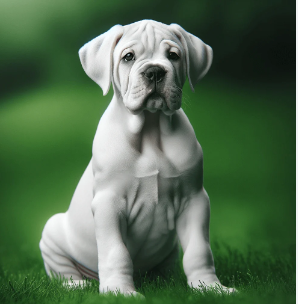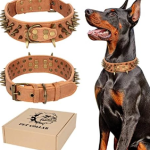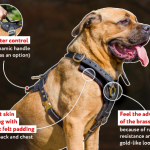Cane Corso Dog
Introduction
The Cane Corso, a breed known for its strength, loyalty, and commanding presence, is a testament to the rich history of canine companionship. Originating from Italy, the Cane Corso is a type of Mastiff that has evolved over centuries to become one of the most revered and impressive dog breeds in the world. This guide aims to provide an in-depth exploration of the Cane Corso, including its history, characteristics, care requirements, and more. Whether you are considering bringing a Cane Corso into your home or are already a proud owner, this comprehensive article will help you understand and appreciate this magnificent breed.
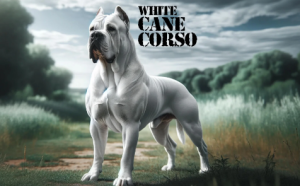
Chapter 1: Historical Background
1.1 Ancient Origins
The Cane Corso’s lineage can be traced back to ancient Rome, where it was known as the Roman Molossian dog. These early ancestors were formidable guardians and warriors, prized for their strength and bravery. The Roman Molossians were used in battle and as guard dogs, showcasing their impressive physical abilities and unwavering loyalty.
1.2 Medieval and Renaissance Italy
During the medieval period, the Cane Corso continued to serve as a versatile working dog. In Italy, they were used for hunting large game such as boar and deer. Their exceptional skills made them invaluable to hunters and landowners. The breed’s role evolved over the centuries, adapting to the changing needs of its human companions.
1.3 Modern Revival
By the mid-20th century, the Cane Corso faced the threat of extinction due to changing agricultural practices and urbanization. However, dedicated enthusiasts and breeders worked tirelessly to revive the breed. Their efforts led to the establishment of breed standards and the Cane Corso’s recognition by major kennel clubs, including the American Kennel Club (AKC) in 2010.
Chapter 2: Breed Characteristics
2.1 Physical Appearance
The Cane Corso is a large and muscular dog, characterized by its robust build and imposing presence. Key physical features include:
- Size: Males typically weigh between 99 to 110 pounds (45 to 50 kg), while females weigh between 88 to 99 pounds (40 to 45 kg). Heights range from 24 to 27.5 inches (61 to 70 cm) at the shoulder.
- Coat: The Cane Corso has a short, dense coat that lies close to the body. It can be found in various colors, including black, gray, fawn, red, and brindle.
- Head and Face: The breed’s head is broad and square, with a prominent stop and a powerful jaw. Their expressive eyes are usually dark and convey a sense of intelligence and alertness.
- Ears and Tail: Traditionally, Cane Corsos have cropped ears and docked tails, though natural ears and tails are becoming more common and are often preferred in modern times.
2.2 Temperament
Despite their formidable appearance, Cane Corsos are known for their gentle and affectionate nature. Their temperament includes:
- Loyalty: Cane Corsos are highly loyal to th
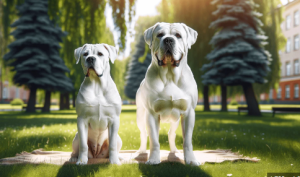 eir families and are known for their protective instincts.
eir families and are known for their protective instincts. - Intelligence: They are quick learners and excel in obedience training and various dog sports.
- Calm Demeanor: While they are naturally alert and protective, Cane Corsos are generally calm and composed when properly socialized.
- Independence: They have a strong-willed and independent nature, which can sometimes be challenging for first-time dog owners.
Chapter 3: Choosing a Cane Corso
3.1 Finding a Reputable Breeder
Selecting the right breeder is crucial for ensuring that you get a healthy and well-bred Cane Corso. Look for:
- Health Screenings: Reputable breeders conduct health tests on their breeding dogs, including screenings for hip dysplasia, elbow dysplasia, and heart conditions.
- Breed Standards: A good breeder adheres to breed standards and prioritizes the health and well-being of their dogs.
- References and Reviews: Seek recommendations from other Cane Corso owners or breed clubs, and check online reviews to gauge the breeder’s reputation.
3.2 Evaluating the Litter
When choosing a puppy, consider:
- Health and Vitality: Look for puppies that are active, alert, and show no signs of illness or discomfort.
- Temperament: Observe how the puppies interact with their littermates and people. A well-adjusted puppy will be curious and social.
- Parent Dogs: Meet the puppy’s parents to assess their temperament and health. This can give you an idea of what to expect from the puppy.
3.3 Adoption and Rescue
In addition to purchasing from breeders, consider adopting from rescue organizations. Many Cane Corsos are in need of loving homes, and adoption can be a fulfilling option for those looking to provide a second chance to a deserving dog.
Chapter 4: Preparing for Your Cane Corso
4.1 Home Preparation
Before bringing your Cane Corso puppy home, ensure your environment is ready:
- Safe Space: Create a designated area with a comfortable bed, food and water bowls, and toys.
- Puppy-Proofing: Remove potential hazards such as toxic plants, small objects that can be swallowed, and electrical cords.
4.2 Essential Supplies
Stock up on the following items:
- High-Quality Food: Choose a diet formulated for large breeds to support proper growth and development.
- Grooming Tools: Invest in brushes, nail clippers, and dental care products.
- Training Supplies: Acquire a leash, collar, and training treats to begin obedience training.
4.3 Veterinary Care
Schedule an initial veterinary visit to establish a health care routine. Discuss vaccinations, deworming, and any breed-specific health concerns.
Chapter 5: Training and Socialization
5.1 Basic Training
Start training your Cane Corso puppy as early as possible:
- Basic Commands: Teach fundamental commands such as sit, stay, and come.
- Positive Reinforcement: Use treats, praise, and playtime to reward good behavior.
5.2 Advanced Training
As your Cane Corso matures, consider advanced training:
- Obedience Classes: Enroll in classes to enhance obedience and address any behavioral issues.
- Dog Sports: Participate in activities such as agility, tracking, or protection work to engage your dog’s physical and mental abilities.
5.3 Socialization
Expose your Cane Corso to a variety of people, animals, and environments to ensure they grow into a well-adjusted adult dog. Socialization helps prevent behavioral issues and fosters a confident and friendly temperament.
Chapter 6: Health and Care
6.1 Regular Veterinary Check-Ups
Maintain your Cane Corso’s health with regular veterinary visits:
- Annual Exams: Schedule yearly check-ups to monitor overall health and prevent diseases.
- Vaccinations: Keep up with scheduled vaccinations to protect against common canine illnesses.
- Dental Care: Regular brushing and dental check-ups are essential for maintaining oral health.
6.2 Grooming
Cane Corsos have minimal grooming needs, but regular care is still important:
- Brushing: Brush their coat weekly to reduce shedding and keep the coat healthy.
- Nail Trimming: Trim nails regularly to prevent overgrowth and discomfort.
- Ear Cleaning: Check and clean ears as needed to prevent infections.
6.3 Common Health Issues
Be aware of potential health concerns in Cane Corsos, including:
- Hip Dysplasia: A genetic condition affecting the hip joints, leading to arthritis and discomfort.
- Elbow Dysplasia: A similar condition affecting the elbows, causing joint pain and lameness.
- Bloat: A serious condition where the stomach fills with gas and twists, requiring immediate medical attention.
- Heart Conditions: Some Cane Corsos may be prone to heart issues, such as dilated cardiomyopathy.
Chapter 7: Living with a Cane Corso
7.1 Integration into Family Life
Cane Corsos thrive in a family environment where they are included in daily activities. Ensure they have:
- Routine: A consistent routine for feeding, exercise, and training helps them feel secure and well-adjusted.
- Family Interaction: Include your Cane Corso in family events and activities to strengthen the bond and ensure they feel part of the family.
7.2 Interaction with Children and Other Pets
Cane Corsos can be excellent with children and other pets when properly socialized. Supervise interactions and teach children how to interact respectfully with dogs.
7.3 Travel and Adaptability
Cane Corsos can adapt to travel if introduced gradually. Ensure they have their essentials and provide a comfortable space during trips. Gradual exposure to different environments helps them become more adaptable.
Chapter 8: Cane Corso Community and Resources
8.1 Joining Breed Clubs
Breed clubs and organizations offer valuable resources and support for Cane Corso owners. They provide information on breed-specific care, training, and events.
- Local Clubs: Join local breed clubs for networking opportunities and access to local events.
- National Organizations: Participate in national clubs for broader support and resources.
8.2 Participating in Events
Engage in breed-specific events such as:
- Dog Shows: Showcase your Cane Corso’s conformation and skills in various dog shows.
- Training Competitions: Participate in obedience trials and other competitions to test and improve your dog’s abilities.
8.3 Supporting Rescue Organizations
Support Cane Corso rescue organizations to help dogs in need. These groups work to rescue, rehabilitate, and rehome Cane Corsos, providing them with a second chance at a loving home.

Conclusion
The Cane Corso is a remarkable breed with a rich history and a range of admirable traits. Understanding their history, characteristics, and care requirements will help you provide the best possible home for your Cane Corso. Whether you are a prospective owner or a current enthusiast, embracing the Cane Corso’s unique qualities and needs will ensure a rewarding and fulfilling relationship with this majestic breed. By investing time and effort into their care, training, and socialization, you can enjoy the many benefits of having a Cane Corso as a loyal and loving companion for years to come.
